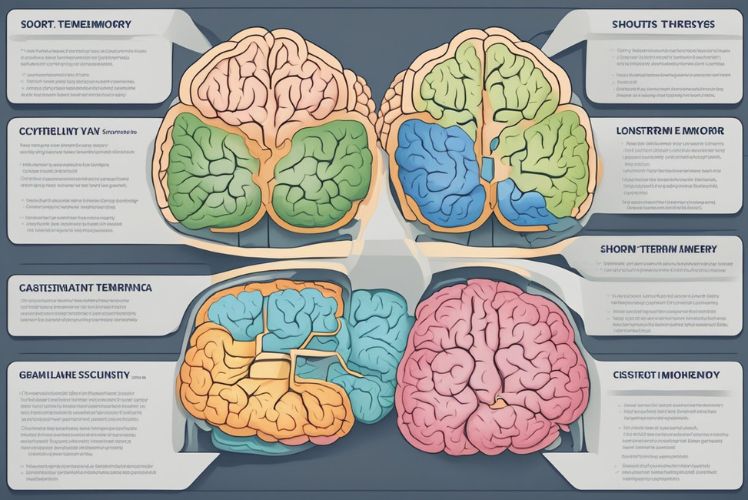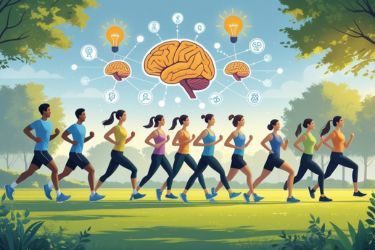Memory is an essential part of how we think, learn, and function daily. Understanding the differences between short-term, long-term, and working memory can help us improve our cognitive abilities and retain information more effectively. Each type serves a distinct role in our mental processes, shaping how we process and recall information.
Short-term memory allows us to hold small amounts of information for a brief period, while working memory enables us to manipulate this information for complex tasks. Long-term memory stores information for extended durations, making it vital for learning and personal experiences. By recognising how these types of memory work, we can adopt strategies to enhance our cognitive skills and better manage our learning processes.
Key Takeaways
- Short-term memory holds information briefly, while long-term memory stores it for longer.
- Working memory plays a crucial role in our ability to solve problems and think critically.
- Improving our memory can enhance learning and information retention strategies.
Understanding Memory: Definitions and Differences
Memory plays a crucial role in our daily lives, affecting how we learn, recall, and interact with the world around us. We will explore the definitions of different types of memory and how they compare, focusing on short-term memory, working memory, and long-term memory.
Defining Memory Types
Memory can be divided into several types, including sensory memory, short-term memory, working memory, and long-term memory.
- Sensory memory is the initial stage of memory, which captures brief impressions of sensory information. It includes:
- Iconic memory for visual stimuli.
- Echoic memory for auditory stimuli.
- Haptic memory for tactile sensations.
Short-term memory holds a small amount of information for a short period, typically around 15 to 30 seconds. It is limited, usually allowing us to remember about 7 items at once.
Long-term memory stores information for extended periods, sometimes for a lifetime. It can be explicit (conscious) or implicit (unconscious) and is generally more durable than short-term memory.
Comparing Short-Term, Working, and Long-Term Memory
While short-term memory and working memory are often used interchangeably, they serve different purposes.
- Short-term memory is for temporarily holding information.
- Working memory involves manipulation and processing of that information, making it more active and dynamic.
Long-term memory differs significantly. It allows us to store knowledge, experiences, and skills over time, enabling us to learn and adapt.
- The brain encodes information into long-term memory through processes like:
- Rehearsal, which involves repeating information.
- Association, linking new information to existing knowledge.
In summary, we see that these types of memory work together, helping us process and recall information effectively.
The Characteristics and Functions of Short-Term Memory
Short-term memory plays a crucial role in our daily cognitive processes. It allows us to hold and manipulate information for brief periods, which is essential for tasks such as problem-solving and decision-making. We will explore how short-term memory experiences temporal decay and how it has limited capacity when it comes to the chunks of information we can handle.
Temporal Decay and Chunk Capacity Limits
Short-term memory is characterised by its limited duration. Information typically lasts from 15 to 30 seconds without rehearsal. This is known as temporal decay, where memories fade if not actively maintained.
The capacity of short-term memory is often cited as 7±2 items. This means we can manage about five to nine chunks of information at one time. A chunk can be a single number, a word, or a meaningful group of items. For example, we might remember a phone number better if we group it into smaller sections.
Therefore, our focus of attention is vital. If we try to remember too much, we risk losing information quickly. To enhance our memory, we can use techniques such as chunking, which helps maximise our cognitive capacity.
Role in Daily Cognitive Tasks
We rely on short-term memory for various cognitive tasks throughout the day. It allows us to keep track of conversations, remember directions, and solve problems.
When we engage in activities like mental arithmetic or reasoning, short-term memory holds the relevant data while we work through the steps. For instance, when adding numbers in our head, we use short-term memory to retain the numbers and any intermediate results.
Attention also plays a key role. Our ability to focus directly impacts how effectively we can use short-term memory. Distractions can lead to forgetting information before we have a chance to process it fully. Thus, managing our attention optimally is essential to utilise short-term memory efficiently in our daily lives.
The Role of Working Memory in Complex Thinking
Working memory is essential for complex thinking. It helps us manage information while engaging in reasoning and decision-making tasks. Understanding its components clarifies how we use this mental workspace in everyday life.
Components of the Working Memory System
Working memory operates as a multi-component system. It consists of three main parts:
-
Central Executive: This directs our attention and coordinates activities within working memory. It decides what to focus on and regulates information flow.
-
Phonological Loop: This component deals with auditory information. It helps us remember sounds, such as a phone number or a person's name.
-
Visuospatial Sketchpad: This part processes visual and spatial information. It allows us to create mental images, which is vital for tasks like navigation.
These components work together to support cognitive tasks, allowing us to hold and manipulate information in our minds effectively.
Working Memory's Role in Reasoning and Decision-Making
In reasoning and decision-making, working memory acts as a crucial tool. It helps us evaluate options and consider consequences. When faced with a choice, we use our mental workspace to compare different outcomes.
Working memory allows us to integrate new information with what we already know. This integration aids in comprehending complex situations. For example, when solving a problem, we can draw on previous experiences while assessing new data.
Without effective working memory, our ability to reason logically and make sound decisions weakens. Maintaining focus in our mental workspace enables us to successfully navigate daily challenges.
Long-Term Memory: Types, Encoding, and Retrieval
Long-term memory plays a crucial role in how we store and retrieve information over extended periods. It encompasses various types, which we can classify as either explicit or implicit memories. Understanding how these memories are encoded and retrieved will help us appreciate their significance in our daily lives.
Explicating Explicit and Implicit Memories
Explicit memory includes two main types: episodic memory and semantic memory. Episodic memory refers to our ability to recall personal experiences, like a birthday party or a vacation. This type is often vivid and tied to specific events. Semantic memory, on the other hand, involves general knowledge, such as facts and concepts we acquire over time.
Implicit memory, unlike explicit memory, operates without conscious awareness. It covers skills and tasks we perform without thinking, such as riding a bike or typing on a keyboard. We also include procedural memory under implicit memory, as it allows us to perform learned tasks automatically after sufficient practice. Both explicit and implicit memories are vital for different aspects of our everyday functioning.
Mechanisms for Memory Storage and Consolidation
Memory encoding is the process where we transform sensory information into a format that can be stored. We use various techniques, such as repetition and mnemonics, to improve our retention of information during this phase.
Memory consolidation follows encoding, where newly acquired information stabilises and integrates into long-term memory. This process often takes place during sleep, highlighting its importance for effective memory retention. Several brain structures, including the hippocampus, play an essential role in this phase.
For memory retrieval, we rely on cues and contexts from the past. Effective retrieval may involve recognition or recall techniques. Recognition is easier, as it allows us to identify information when presented, while recall requires us to retrieve information without specific prompts. Understanding these mechanisms helps us leverage our long-term memory more effectively.
Cognitive Aids and Strategies to Enhance Memory
To enhance our memory, we can employ various cognitive aids and strategies. These methods include memory techniques that improve recall and practices that help maintain optimal brain health. By using these strategies, we can manage memory loss and boost our cognitive functioning.
Memory Techniques and Improving Recall
We can adopt memory techniques that are effective for improving recall. One popular method is chunking, which involves breaking information into smaller, manageable units. For example, instead of trying to remember a long string of numbers like 123456789, we can group them as 123-456-789.
Another useful strategy is creating cues. These prompts can jog our memory by associating new information with something familiar. For instance, linking a person’s name to a visual image or a word can make it easier to remember. Regular rehearsal of key facts also strengthens our memory, as repetition helps to secure information in our long-term memory.
Maintaining Brain Health for Optimal Memory Function
To support our memory, we must also focus on maintaining brain health. Engaging in regular physical activity can promote blood flow to the brain, which is essential for cognitive functioning. Activities like walking, running, or dancing can all significantly enhance our brain's health.
Another important aspect is proper nutrition. A diet rich in antioxidants, omega-3 fatty acids, and vitamins can support brain function. Foods like fish, nuts, berries, and leafy greens are beneficial.
Additionally, we should prioritise mental exercises. Activities such as puzzles, reading, and learning new skills can sharpen our cognitive aptitudes. Lastly, getting adequate sleep and managing stress are vital for maintaining attention and memory capabilities, reducing the risk of cognitive decline as we age.





















